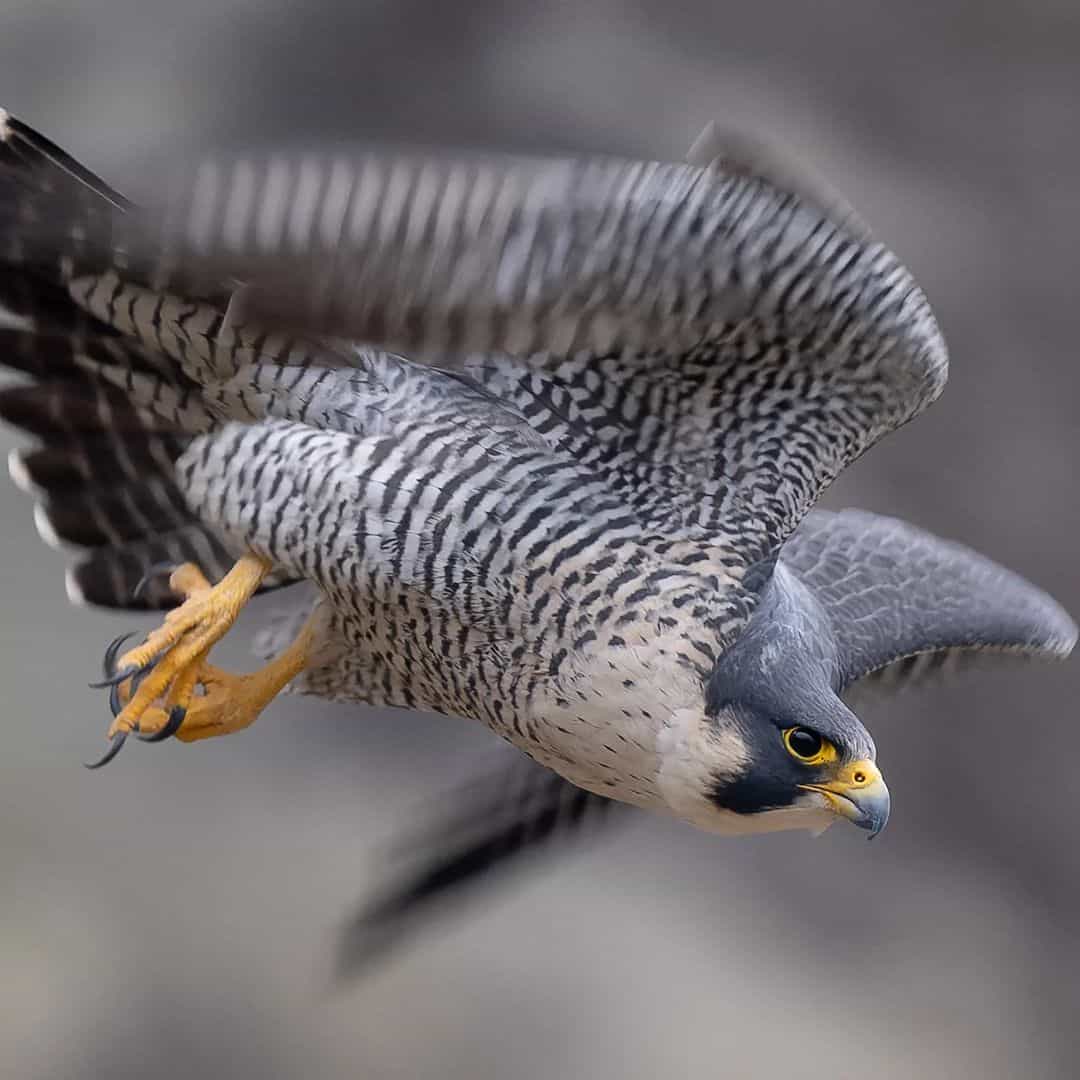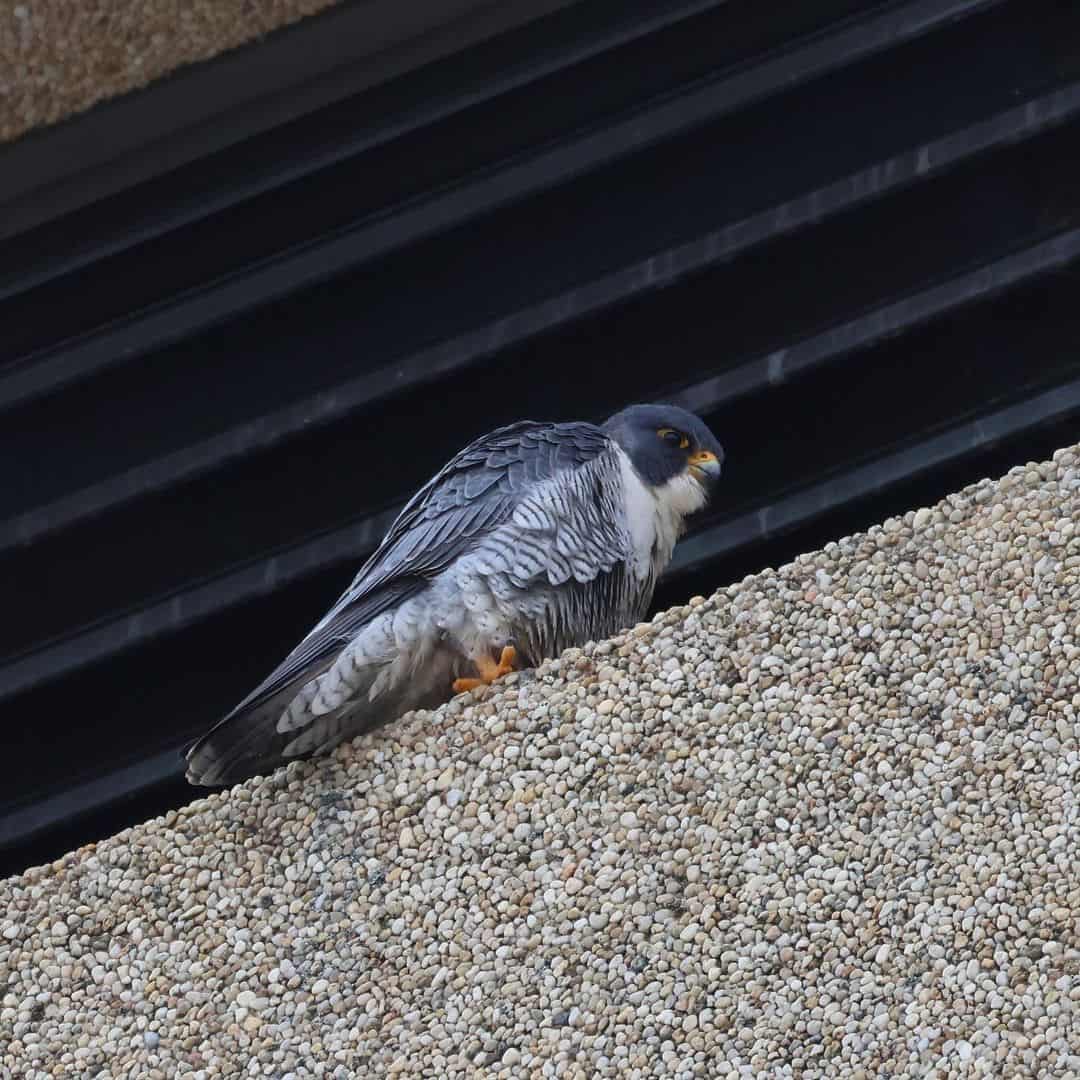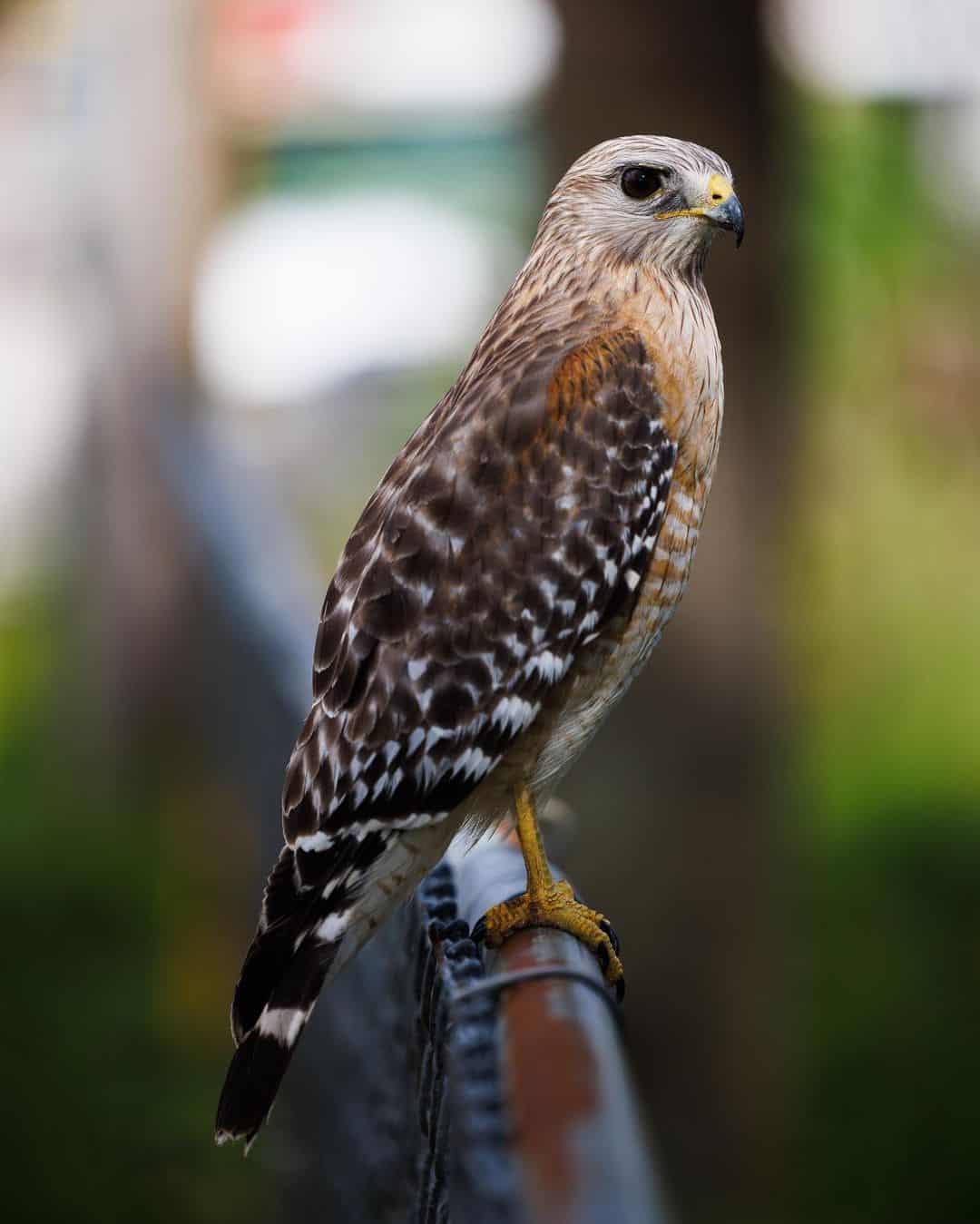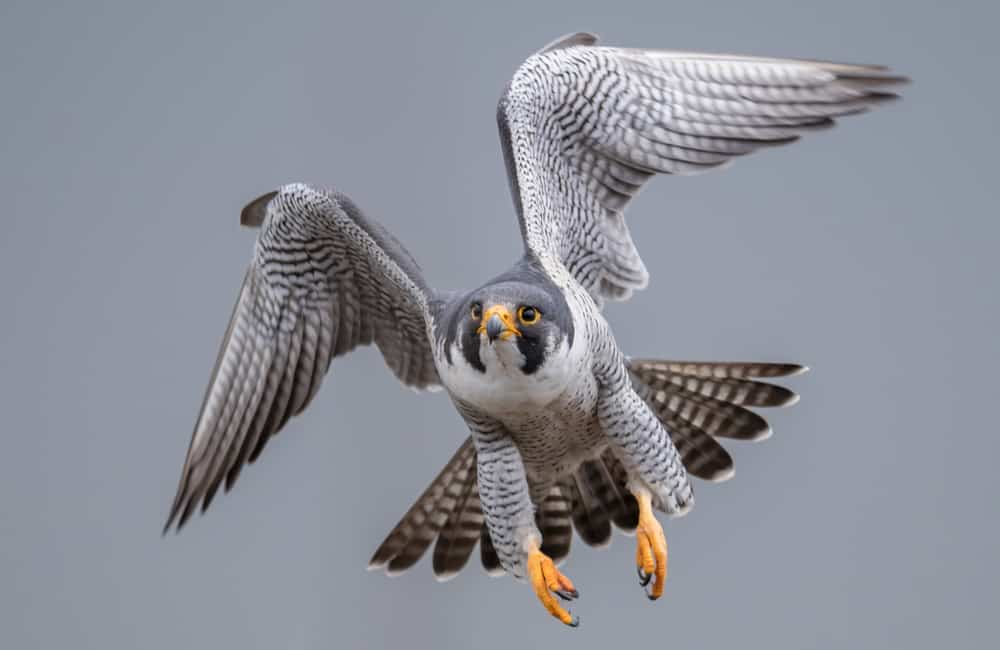Birds of prey are some of the most fascinating animals in the world. Famous for their killer instincts, speed, agility, and hunting prowess, they’ve long been a favorite for nature lovers.
The hawk and the falcon are two of these birds’ most popular and widespread. To the untrained eye, it can be easy to mistake these majestic birds. But there are easy ways to compare and contrast them.
Whether you’re an avid bird watcher wondering what type of bird is nearby or simply curious about the differences between these beautiful birds, we’ve got you covered.
This article will explore the similarities and differences between the hawk and the falcon, helping you quickly identify them in the wild.
Hawk vs. Falcon
1. Size
Perhaps one of the biggest distinguishers between hawks and falcons is their size. That’s because hawks are generally much larger than their falcon counterparts.
We can see this clearly by comparing the two biggest members of either group. The largest hawk recorded is the ferruginous hawk, which lives in open planes and prairies. It can grow to an incredible length of between 26-30 inches.
On the other hand, the largest falcon, the gyrfalcon, which lives in the Central Asian highlands, reaches a maximum length of about 24 inches.
That said, a common misconception about both hawks and falcons is that they are always big birds. Not quite. Both types of birds have a variety of smaller subspecies, some of whose outlines can be mistaken for garden birds.
The smallest hawk, for example, is the sharp-shinned hawk, which only measures only 8 inches. Similarly, the American kestrel is the smallest falcon, measuring only 9-12 inches long.
2. Species variation
Species and classification can be beneficial in highlighting the differences hawks and falcons have with each other and the qualities they share with other bird species.
The hawk is by far the more diverse of the two, with over 200 known species worldwide, making them very popular with bird watchers.
Additionally, the hawk has close ties with other notable birds of prey, like kites, buzzards, and eagles, as each is classified in the bird family Accipitridae. Notable hawk species include red-tailed hawks, sparrowhawks, and the Northern goshawk.
On the other hand, the falcon has much less variation and diversity. There are only 64 known species globally, making identification much more straightforward but perhaps less exciting.
Falcons have been classified within the family Falconidae, a very niche order of birds whose only other members are the caracaras. More recently, they’ve also been grouped with parrots and passerines, forming the much broader order Falconiformes.
Within this group, though, the genus falcon describes ‘true falcons,’ like the peregrine falcon, gyrfalcon, and prairie falcon.

shin_g_abe
3. Colors and feathers
Colors are one of the core ways we identify different species of birds. Sometimes, they can be key in telling the bird’s age and gender.
While both hawks and falcons share many color variations, there are some key differences you should be aware of that can help tell them apart.
Generally, most hawk species will have a reddish-brown or dark-brown head and wings, and their mouth and feet will be primarily yellow.
Female falcons will generally have black-barred wings, while males will be a combination of blue and grey. They tend to have black and white stripes on their underside and belly and have a noticeable yellow eyelid and upper mouth.
Another easy identifier between hawks and falcons is their cheeks. Hawks typically have brown cheeks, which are hard to clearly define against the bird’s plumage. On the other hand, falcons have easily noticeable white cheeks.
4. Hunting skills
As raptors, both hawks and falcons are exceptional hunters. With keen eyesight, they can easily spot and kill small mammals like rabbits, rats, mice, squirrels, reptiles like snakes and lizards, and even smaller birds.
But how they kill their prey can differ. That’s because of how their body has developed. Hawks have sharper, more visceral talons, which they use to kill their prey by swooping down and ambushing them. They have a heightened grip, meaning it is hard for prey to escape once they latch on.
On the other hand, falcons have a specialized “tooth” on their beak, which is more effective at piercing prey’s neck. This unique beak also enables falcons to kill other birds while in flight.
5. Body and wings
One of the signature features of any bird is its wings. Both hawks and falcons have different wings that allow them to excel in different areas.
Hawks have a much broader body and, as such, have wider wings to support their weight. Their wings will also have rounded edges. Some species may even have distinguished, separate feathers as part of their wings, which give the bird more flexibility and maneuverability when in flight.
On the other hand, falcons have much slimmer bodies, making them experts in diving and swooping. Their wings will also be extended, slender, and pointed to give them even greater speed.
If you’re bird-watching and cannot see the wings clearly, pay close attention to how the bird uses them. Because of their broader wingspan, hawks will flap quite slowly to remain airborne. They can also glide for long periods. In contrast, falcons must flap their wings quickly to stay airborne and aren’t that comfortable gliding for long distances.

backyardbirds_kty
6. Nests and eggs
Sometimes, people may stumble upon a nest, curious to know which bird lives there. Thankfully, both species prefer vastly different places to build their homes.
Most hawk species prefer nesting at the top of large trees. They are usually found in dense forests, which offer protection from other rival birds traveling into their territory. Hawks will use a variety of branches to structure their home.
On the other hand, most falcons prefer nesting in remote, undisturbed places like cliffsides, quarries, high bridges, hollowed trees, and other remote locations. They won’t use materials but rather dig shallow holes. Their nests are arguably harder to find as falcons prefer quiet places where no one will disturb them.
Eggs can also be quite different. Hawk eggs are often larger and greenish-white. Falcon eggs are usually smaller in size and pinkish-red in color. Another difference can be the quantity – hawks typically have a larger clutch of between 2-7 eggs, whereas falcons will typically only lay 3-4 eggs per year.
7. Speed
Speed is another crucial metric in telling hawks and falcons apart. While it might be hard to measure this in real life, there is a clear winner regarding how fast a hawk and falcon can fly.
Because of their different wing makeups, the falcon is easily the fastest. It has long, slender wings that allow it to dive at incredible speeds, reaching an impressive average of 60 miles per hour.
Some species, like the peregrine falcon, are so agile that they’re hailed as the world’s fastest animal, with an estimated diving speed of over 200 miles per hour.
That’s not to say the hawk is slow by any means. Their broad wings allow them to fly quickly in open spaces, reaching 40 miles per hour on average.

areilly76
8. Habitat
Both hawks and falcons are found on every continent besides Antarctica. As such, they live in a variety of different habitats. But we can make some general conclusions about where both prefer to live.
Because of their wider wingspan, hawks prefer open plains, like fields, meadows, and deserts. They can glide longer distances, find prey more quickly, and land on them with their talons.
While falcons can live in open spaces, their nimble, slender frame allows them to excel in urban settings. Don’t be surprised to find them in cities, towns, villages, and farmland. Because of their agility and smaller frames, they can easily navigate challenging, rugged terrain like mountains and cliffsides.
Conclusion
Hawks and falcons have long been among the most popular birds worldwide. Both can be similar, promising excellent hunting skills, agility, keen senses, and trainability.
But as our article has shown, there are many differences between the average hawk and falcon on closer inspection.
The hawk is a much broader bird that prefers to glide across open prairies and catch prey with its powerful talons. Hawks are also one of the biggest birds of prey, closely related to several other types of birds, like eagles and buzzards.
In contrast, falcons are more slender and agile, preferring to dive from the sky. Their visceral beak makes them closely related to caracaras and parrots, too. Falcons also enjoy a more solitary life, preferring to nest and live in cliff faces, quarries, and other remote locations.
Have you any other differences between a hawk and a falcon? Or perhaps, you’d like to share your experiences of birdwatching these species? Then please leave a common below.
But three key differences to remember are:
- Flight: Hawks have broader wings that allow them to glide in open spaces better. Falcon wings are slender, allowing them to dive quicker.
- Hunting: Hawks prefer using their nails to make a kill. Falcons will use their specialized beak to kill instead.
- Nest: Hawks prefer nesting in tall trees, usually in forests. Falcons nest in remote locations, like cliffsides and abandoned buildings.
